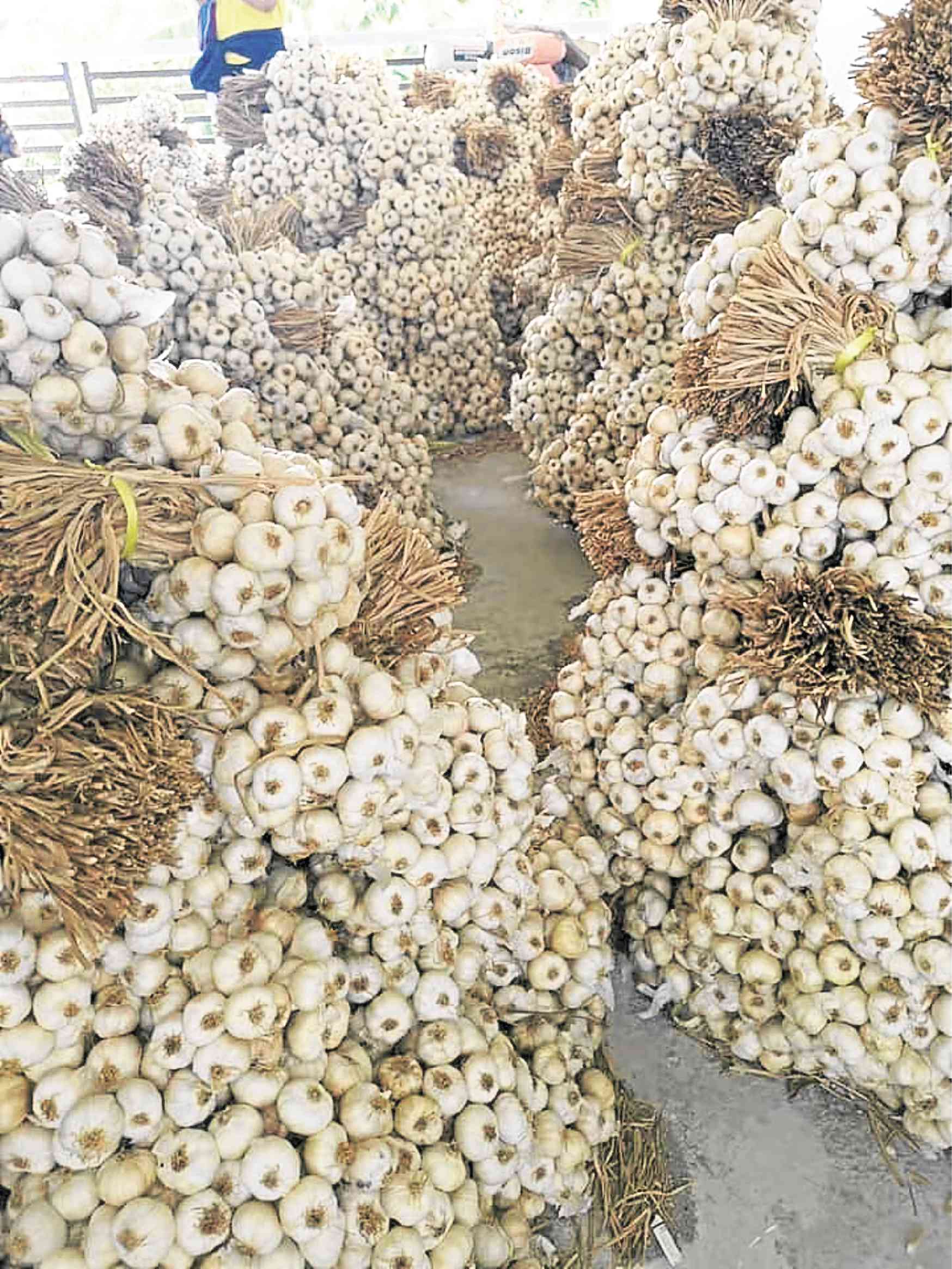
CASH CROP Garlic is a major crop grown on Lubang Island, Occidental Mindoro. —JAM MELCHOR/Contributor
In a matter of days, farmers from Lubang Island in Occidental Mindoro province have sold almost 70 tons of local garlic harvested this year.
This could be a windfall for the more than 100 garlic growers in Lubang, compared with their earnings in previous years, said Tony Gerundio, Department of Agriculture (DA) director in Mimaropa (Mindoro, Marinduque, Romblon and Palawan) region.
“Maybe [buyers just] didn’t know that garlic is being produced [in Lubang]. It’s just a matter of the right information dissemination,” Gerundio said.
In a telephone interview on Thursday, Gerundio said only about four tons of garlic were left from the harvests after traders, over the last couple of days, began calling to buy directly from Lubang farmers.
No oversupply
He said the DA in Western Visayas region had also requested to buy six tons of garlic for planting in their region.
While the DA said there was no oversupply of local garlic, chef and Philippine Culinary Heritage Movement founder Jam Melchor last week appealed on social media to help Lubang farmers by buying their harvest.
Gerundio said garlic is a primary crop on Lubang Island, harvested only once a year usually in May. Small- to medium-sized garlic bulbs are sold for P60 to P80 a kilogram while the larger bulbs are sold for P100 per kilo.
Melchor said locally produced garlic makes up only 6 percent of the country’s demand for consumption or planting. The rest is imported from China, Taiwan and India.
In a separate telephone interview, Melchor, a heritage food advocate, said he preferred to use local garlic in his dishes because of its “stronger” flavor than those grown abroad.
A downside, though, is that imported garlic bulbs are bigger and cheaper.
Call to action
“My post was just a call to action … for market linkage,” said Melchor, who also earlier appealed to consumers in the food industry to buy locally produced mangoes.
The campaign gained traction, preventing food wastage from the oversupply of the tropical fruit earlier this month.
Gerundio said the DA appreciated the initiative from the private sector to support local farmers and hoped for a regular demand for local produce in future harvests. —MARICAR CINCO